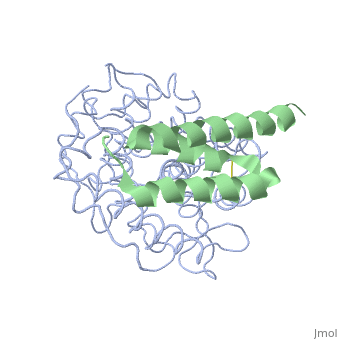Extra cellular fibrinogen binding protein- Efb
Staphylococcous Aureus is a bacterium that is commonly found on human skin and respiratory tracts; however, when it becomes pathogenic it can cause many diseases: skin infections, respiratory diseases(pneumonia), food poisoning. It is a Gram positive, cluster forming coccus, non-motile, facultative Anaerobe and a leading cause of nosocomial infection. More about Staph Aureus
Complement System is part of the innate immune system and helps aid antibodies and phagocytic cells to kill off pathogenic cells. Complement system contains 30 proteins produced in the liver and are secreted into the body. Key proteins that are in the complement system that Efb inhibits:
C3A- vasodilation of blood vessels- increase in permeability, phagocytes can get to tissues faster
C3B- opsonization- coats bug with IgG and allows phagocytosis
more about complement system
cascade process
Efb function is a protein that is secreted by Staphylococcous Aureus which mimics the natural proteins in the body that inhibit the complement system. These proteins are called regulator of complement activation(RCA). In general, RCA proteins suppress the activation of C3 and C4 by dissociating the subunits of C3 and/or C5 convertases or by acting as cofactors for factor I–dependent cleavage of C3b and/or C4b. [1] Efb has been shown to bind to the C3d domain of C3 and C3B, inhibiting its function.
Structural motifs
The overall dimensions of Efb-C were approximately 40x25x20 A° and 15.6 kDa, with the N-terminal a1 helix (K106–H125) connected
through a short loop to the a2 helix (V127–L139), followed by the C-terminal a3 helix (K145–Q161), and terminating in a random coil conformation. All three helices were packed in a canonical three-helix bundle fold, with most of the nonpolar side chains directed inward.[1] Figure 1 Many RCA proteins like factor H contain a short consensus repeat or complement-control protein beta-type fold but Efb does not. Its structure is entirely helical and therefore defined a previously unrecognized fold class for complement regulatory proteins. [1]
Interactions
of Efb were noted as extremely important in achieving binding with the C3d domain, and . Mutations by site-directed mutagenesis to these two points showed lack of complex formation and showed that other residues of Efb were not enough to drive complex formation. It was also observed that the a2 helix was mostly interacting with the C3d complex.
Efb-C blocks the formation of the functional C3b opsonin by binding tightly to the thioester-containing domain of native C3 and by perturbing the overall solution conformation of the molecule to one that is incapable of being processed into C3b. [1]
Future Possibilities
Possible new anti-staph. aureus compounds can be synthesized that target the Efb-C3 interaction. It can also be used as a model in clinical settings to block complement activation. Knowing the two binding sites, R131 and N138, is a good starting point for screening of new bioactive peptides. [1]

